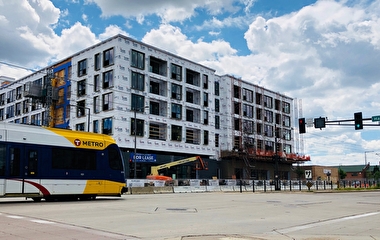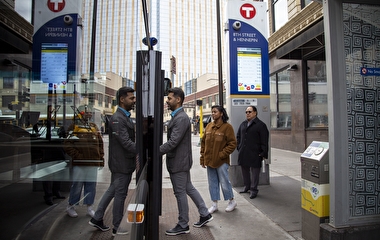Minnesota Pollution Control Agency
By connecting measures of happiness to transportation, researchers are developing new metrics that can help cities prioritize infrastructure investments. In a new study, a research team that included Humphrey School of Public Affairs professor Yingling Fan found that air quality appears to be linked with a variety of emotional well-being (EWB) outcomes.
“As cities seek to evolve and become more livable, new metrics may help them achieve their desired goals,” Fan says. “Understanding how local air quality, neighborhood infrastructure, and well-being are connected could help cities identify strategies and investments for improving public health. It may also identify disparities across neighborhoods to pinpoint those at higher risk for low emotional well-being.”
To determine whether neighborhood air quality and happiness are linked, researchers first needed better ways to measure them. Traditionally, air pollution has been measured using expensive, bulky, and sparsely located monitors, and EWB data relied on the memories of study participants.
In this project, researchers used low-cost sensors developed in recent years to assess exposure to fine particulate matter (PM2.5) from regional sources such as power plants in six Twin Cities neighborhoods. They also used air-quality modeling to estimate traffic-related nitrogen oxides (NOX).
To measure happiness, the DaynamicaTM smartphone app was used to collect data from residents of the six study neighborhoods. The app tracked the residents’ movements for seven consecutive days; residents later annotated the data with assessments of their emotional well-being. Data included happiness, tiredness, stress, sadness, and pain.
The neighborhoods—four in Minneapolis and one each in the suburbs of Blaine and Brooklyn Center—varied in terms of median household income and access to light rail. The study period was from October 2016 to April 2017.
The researchers found that, at least in the case of fine particulate matter, air quality and happiness appear to be linked. “We discovered that higher concentrations of fine particulate matter led to lower emotional well-being scores of positive emotions, and higher scores for all the negative emotions such as tiredness, stress, sadness, and pain,” says Dr. Raj Lal with the Georgia Institute of Technology, the lead author of a paper summarizing the study.
The study didn’t find a link between traffic-related nitrogen oxides and any of the well-being outcomes. “Our data shows a near-zero relationship between emotional well-being and NOX, but we believe this is because there were low NOX levels throughout the study neighborhoods,” Lal explains.
The neighborhoods with lower household incomes tended to have higher PM2.5 concentrations than those with higher socioeconomic status, raising environmental justice concerns, Lal notes. Simulated NOX levels from vehicles were significantly higher in the urban neighborhoods than in the suburban ones, which was expected given higher average traffic counts in the urban areas. Close proximity to light rail had no observable impact on average observed PM2.5 or simulated traffic-related NOX.
The study findings, and the novel methods that the team introduced, could be used to guide policies in Minneapolis and other cities with similar neighborhood characteristics. “Now, cities can see that local interventions, such as travel demand management policies reducing single-occupancy vehicle travel, may offer not just air quality improvements but also improved well-being,” Fan says.
The project was funded by the National Science Foundation. Findings are published in the journal Environmental Health Insights.



